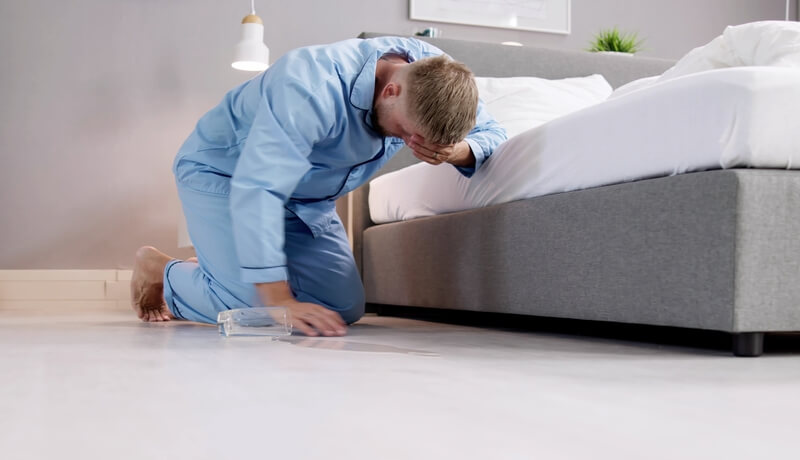Treating Low-Pressure Headaches – HOMED Medical Clinic
What Are Low-Pressure Headaches?
Low-pressure headaches, also referred to as spinal headaches, occur when there is a leak of cerebrospinal fluid (CSF), leading to reduced CSF pressure around the brain and spinal cord. These headaches often follow a lumbar puncture (also known as a spinal tap), or an epidural, procedures that can cause changes in the pressure within the spinal canal. In some cases, a CSF leak can happen without an identifiable cause, and the symptoms may resemble those of a migraine headache.
Causes of Low-Pressure Headaches
Low-pressure headaches typically occur due to a CSF leak that reduces the pressure around the brain. This reduction can be caused by:
- CSF leaks from cysts near the spinal cord
- Traumatic injuries to the connective tissue or spinal canal
- Spontaneous CSF leaks without a clear cause
In addition to medical procedures, factors such as changes in atmospheric pressure and barometric pressure can influence headache severity in some individuals.
Recognizing the Symptoms of Low-Pressure Headaches
One of the key signs of a low-pressure headache is that the pain worsens when you sit or stand and improves when you lie flat. This is due to the changes in CSF pressure based on posture. Other symptoms include:
- Stiff neck and muscle tension
- Nausea, vomiting, and dizziness
- Sensitivity to light and sound (photophobia and phonophobia)
- Blurred vision and difficulty concentrating
- General weakness or fatigue
Diagnosis of Low-Pressure Headaches
Doctors may use imaging tests such as MRI or CT myelography to confirm a diagnosis of a CSF leak. These tests help visualize the spinal fluid and pinpoint the location of any leak or irregularities within the spinal canal.
Treatment Options for Low-Pressure Headaches
The primary objective of treating low-pressure headaches is to alleviate pain and allow the body to naturally heal the CSF leak or take specific measures to address the condition. Here are the most common treatment approaches:
Conservative Treatment
Many cases of low-pressure headaches can be managed with conservative approaches, which focus on encouraging the body to seal the leak and relieve pressure:
- Rest: Stay lying flat as much as possible to help reduce strain on the spinal cord.
- Hydration: Drinking fluids, particularly those with caffeine, can help raise CSF pressure temporarily by constricting blood vessels.
- Pain relief: Over-the-counter medications like ibuprofen or acetaminophen can provide relief.
Medical Interventions
If conservative treatments do not sufficiently address the issue, the following interventions may be necessary:
- Epidural Blood Patch: This common procedure involves injecting a small amount of your own blood into the epidural space to create a clot and seal the CSF leak.
- Surgical Repair: In severe cases where the leak persists, surgery may be needed to repair the damaged connective tissue and stop the leak.
Preventing Low-Pressure Headaches
Preventing low-pressure headaches primarily involves taking steps to reduce the risk of a CSF leak during medical procedures. Recommendations include:
- Proper technique: Ensure that medical professionals use proper techniques during procedures like lumbar punctures and epidurals.
- Post-procedure care: After a procedure, remain well-hydrated and avoid activities that increase spinal pressure.
When to Seek Medical Attention
If you experience a severe headache following a spinal tap or epidural, especially if it worsens when you sit or stand and improves when you lie flat, seek medical attention immediately. Persistent headaches that do not improve with conservative treatments should also be evaluated by a healthcare provider.
Understanding Low-Pressure Headaches
For those experiencing recurring or chronic low-pressure headaches, keeping a headache journal can be beneficial in tracking symptoms and identifying triggers. Monitoring factors like changes in atmospheric pressure and lifestyle adjustments can help in managing the condition long-term.
Conclusion
Low-pressure headaches can significantly impact quality of life, but with the right diagnosis and treatment, symptoms can be effectively managed. Understanding the causes, recognizing the symptoms, and seeking appropriate care are key steps in dealing with this condition. For more information, visit our Headaches Treatment page or contact our clinic for expert care.
Request an appointment.
Treating Low-Pressure Headaches

